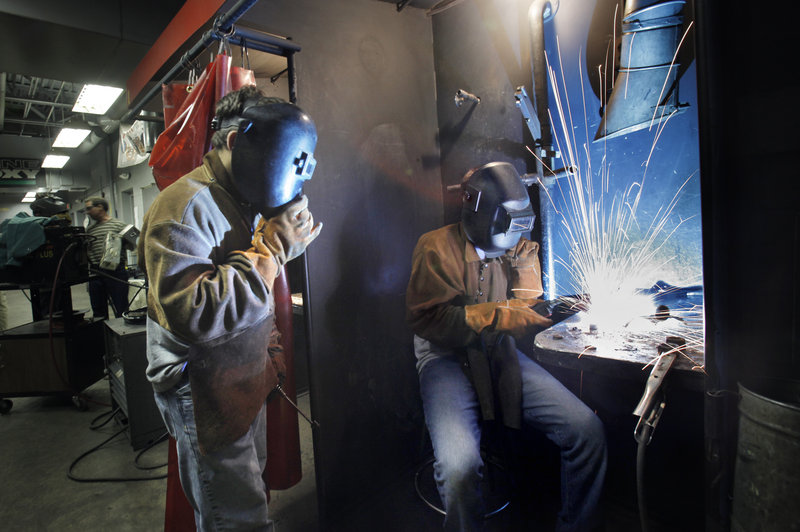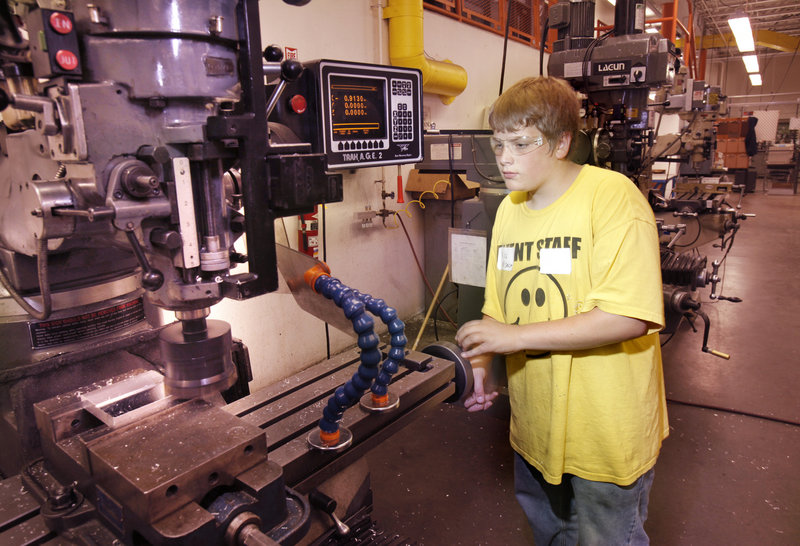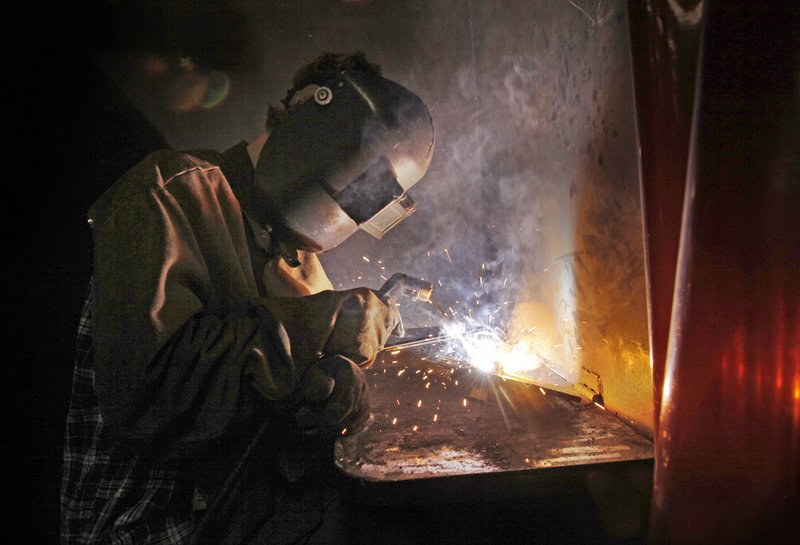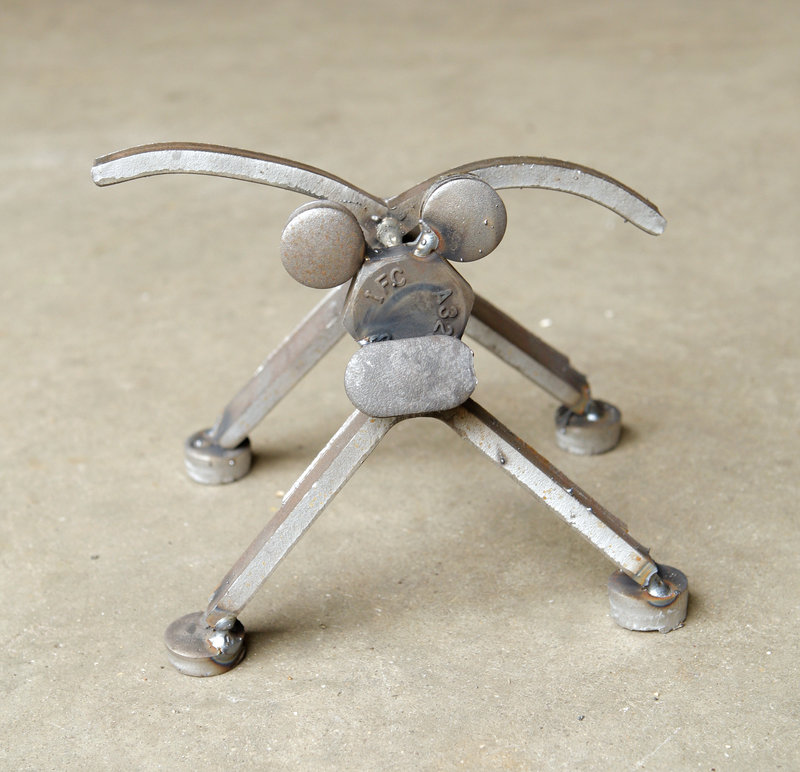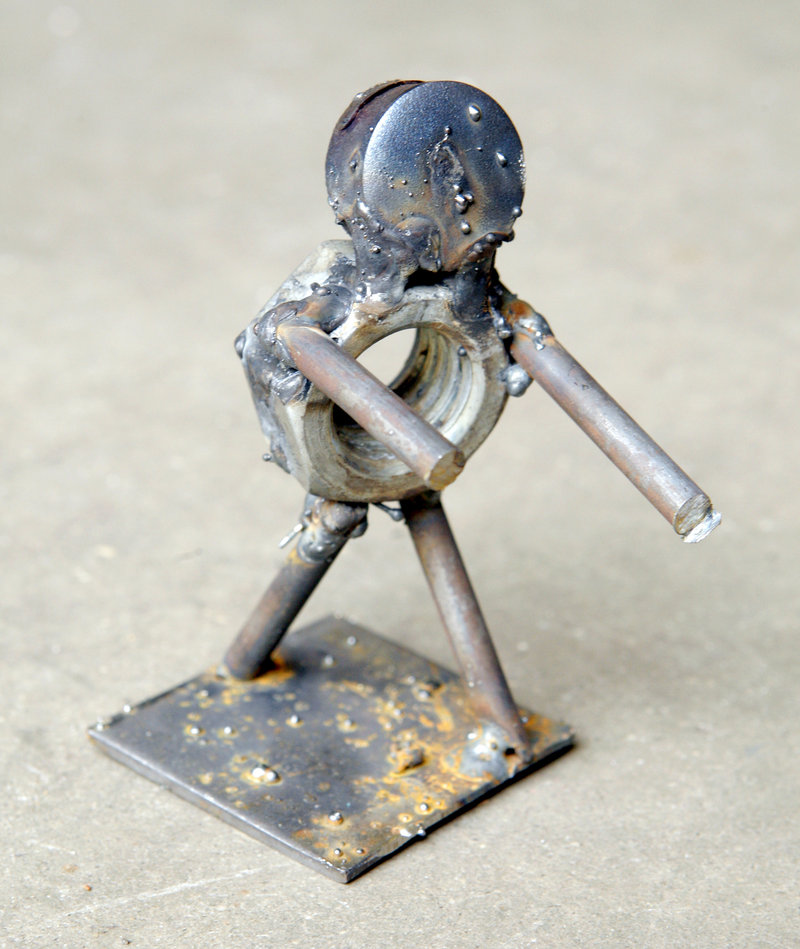SOUTH PORTLAND – Campers wearing face shields and protective leather gear watched as sparks flew off the torch, fell to the floor and bounced off the instructor. Then it was their turn to practice oxy-acetylene cutting.
“You want cherry red. You want to hang out there, oh, 10 seconds,” Tom Howard, the welding instructor, told a camper. “Excellent. Good cut.”
In the Mind Over Metal camp at Southern Maine Community College, teenagers will learn welding, machining and related skills, and gain exposure to career possibilities in manufacturing.
Thirteen boys, ages 13 to 17, are participating this week. An advanced session is scheduled for July 5-10.
Camp Director John Bolduc hopes some students will consider manufacturing as a career. The future of the industry depends on it, he said.
“The work force is getting old. If we don’t have another generation going into this work, we’re going to be in trouble,” said Bolduc, chairman of SMCC’s Integrated Manufacturing Technology Department.
Small sculptures, nameplates, pens and pen holders were among the camp projects this week. Their creation required campers to operate lathes, power cut-off saws and milling machines. They used digital calipers, height gauges and math skills, and did various types of welding and cutting.
“It’s really fun, actually. You get to create anything you want,” said Isaac Santerre, 14, a freshman at Casco Bay High School in Portland.
This week’s camp is one of 20 programs that won grants from Nuts, Bolts & Thingamajigs, the foundation of the Fabricators & Manufacturers Association. Foundation spokeswoman Pat Lee said the hope is to expand that to 325 — the number of community colleges that belong to its partner, the National Association for Community College Entrepreneurship.
Manufacturing employment has declined in Maine, and it’s the lower-skilled jobs that have been shed, said John Dorrer, director of the Center for Workforce Research and Information in the state Department of Labor. “We’re now doing much more of the high end,” he said.
In 1990, the manufacturing sector accounted for 101,950 jobs, 24 percent of the state’s employment. 2009, the figure had fallen by about half, to 51,834 jobs, 11 percent of the state’s employment. Transportation equipment, paper, fabricated metal products and food are the largest areas.
Members of the Manufacturers Association of Maine are increasingly challenged to find workers with the right skills, said Lisa G. Martin, the organization’s executive director. During a tour of D&G Machine Products in Westbrook, campers saw test rounds for Navy destroyers in various stages of production, giant paper machine rolls that were in for maintenance, and imposing computerized metal-working machines that are used for milling and lathing.
The event was part of D&G’s recruitment strategy. Ten percent of its employees are eligible for retirement, and younger workers are needed to replace them, said Bob Smith, the company’s human resources manager.
After a lull of 18 months, the precision-parts maker is hiring again. As usual, there’s a need for “computerized numerical control” machinists, who can do trigonometry, read blueprints, program the machines and match the right tools to the job, among other things.
With several years of experience, those workers can earn $18 to $20 an hour, and there’s often opportunity for overtime.
“We hear a lot about manufacturing jobs going overseas,” Smith said. “Not all of them are.”
Staff Writer Ann S. Kim can be contacted at 791-6383 or at:
akim@pressherald.com
Send questions/comments to the editors.

